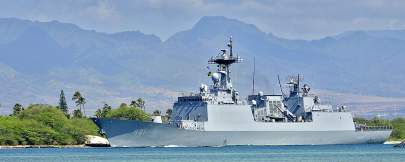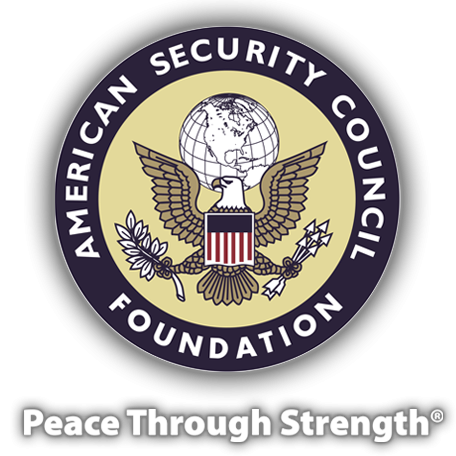China BRI - Taking of the South Pacific Islands
Wednesday, January 18, 2023
Written by Laurence F Sanford, Senior Analyst ASCF
Categories: ASCF Articles

South Pacific islands are being targeted by China with its Belt & Road Initiative (BRI) strategy of economically and militarily dominating the world. It offers predatory loans to poor countries to finance the construction of roads, ports, railways, and other infrastructure projects by Chinese companies. China has become a major global lender to developing countries through BRI, with total cumulative loans worth more than $800 billion. Many of the loans are hidden from public view and linked to kickback schemes for political leaders and elites. The loans are often built on risky foundations for repayment, leading to loan default and Chinese forfeiture seizure of assets.
BRI's “debt trap diplomacy” describes how numerous poor countries have accumulated so much Chinese debt that they are unable to service the loan interest payments, let alone pay back the debt. In 2022, China will collect $14 billion in debt servicing from the world's poorest nations. If a country defaults on the loan, China then seizes assets such as the Sri Lankan port of Hambantota, which is located on key shipping routes in the Indian Ocean, or in the case of Africa, mines and mineral rights. The indebted country then turns to Western banks for a financial rescue. Thus the West and United States are indirectly financing China’s BRI strategy of world domination.
China recently expanded its worldwide BRI efforts to South Pacific islands that stretch between Australia, New Zealand, and Hawaii. Many of these islands are where hard-fought battles were waged in the “island hopping” offensive by the U.S. in World War II. They sit astride key ocean passageways between Australia and the U.S
Chinese Foreign Minister Wang Yi recently completed a ten-day tour of eight island countries promoting regional and economic security. Island nations visited were the Solomon Islands, Kiribati, Samoa, Fiji, Tonga, Vanuatu, Papua New Guinea, and East Timor. Virtual meetings were held with Cook Islands, Niue, and Micronesia. Wang could not secure a regional agreement but signed several bilateral deals on areas of economic cooperation and policing equipment. China is now a major trading partner for these Pacific island economies. Wang did not visit the Marshall Islands, Nauru, Palau, and Tuvalu because they recognize Taiwan as a country.
In recent years, China has funded widely publicized projects such as a sports stadium in the Solomon Islands, Papua New Guinea highways, and Fiji bridges. Visits by Chinese President Xi Jinping in 2014 and 2018 raised China’s profile in the region.
Earlier in the year, China signed a security agreement with the Solomon Islands, sparking fears that a Chinese military presence would follow. Foreign Minister Wang quickly denied that China’s moves had a military angle. But China had originally denied any military objective in the South China Sea and now has built up atolls supporting air bases and missiles. Lest we forget, China signed agreements to honor Hong Kong’s special status.
The United States, Australia, and New Zealand have a long history of economic and security support with the South Pacific island nations. New initiatives have been developed to ensure they remain partners and that China does not gain the upper hand.
From the island nations’ perspective, a little competition from China can enhance their leverage in receiving aid. China does not have any qualms in bribing local politicians. Even though China is the biggest polluter in the world, its campaign to show concern about climate change and rising seas play well with low-lying island nations. Lastly, there are some underlying and long-standing resentments for the U.S. and Britain's nuclear testing done in the 1960s.
In addition to seeking a military presence in the South Pacific, China is seeking fishing rights to vast seas protected from commercial fishing. During Wang’s visit to Kiribati, the government announced its plans to end a commercial fishing ban in the Phoenix Islands Protected Area.
China has the world's largest fishing fleet, with approximately 3000 boats that often serve as an arm of the Chinese military. They have depleted fishing grounds near China and the South China Sea and are now depleting fishing grounds in African waters. The local African fishing industry is being decimated by the large factory fishing flotilla.
China has the world’s largest Navy, with an estimated 333 warships, versus the U.S., with 296 warships. Meanwhile, the U.S. is reducing its Navy ship count while China continues to expand. Hundreds of offshore patrol and Coast Guard ships are not included in the Chinese total.
It is incumbent for the U.S. to counter the threat, not only in the South Pacific but throughout the world, by increasing military capabilities with less costly diesel-electric submarines (10 for the price of one nuclear) and more missile launching sea-based platforms. The current U.S. nuclear submarine fleet count is 68 versus China’s 79 (not all nuclear).
The U.S. needs a “Peace Through Strength” long-term strategy.
Laurence F. Sanford
Senior Analyst
American Security Council Foundation
www.ascf.us











